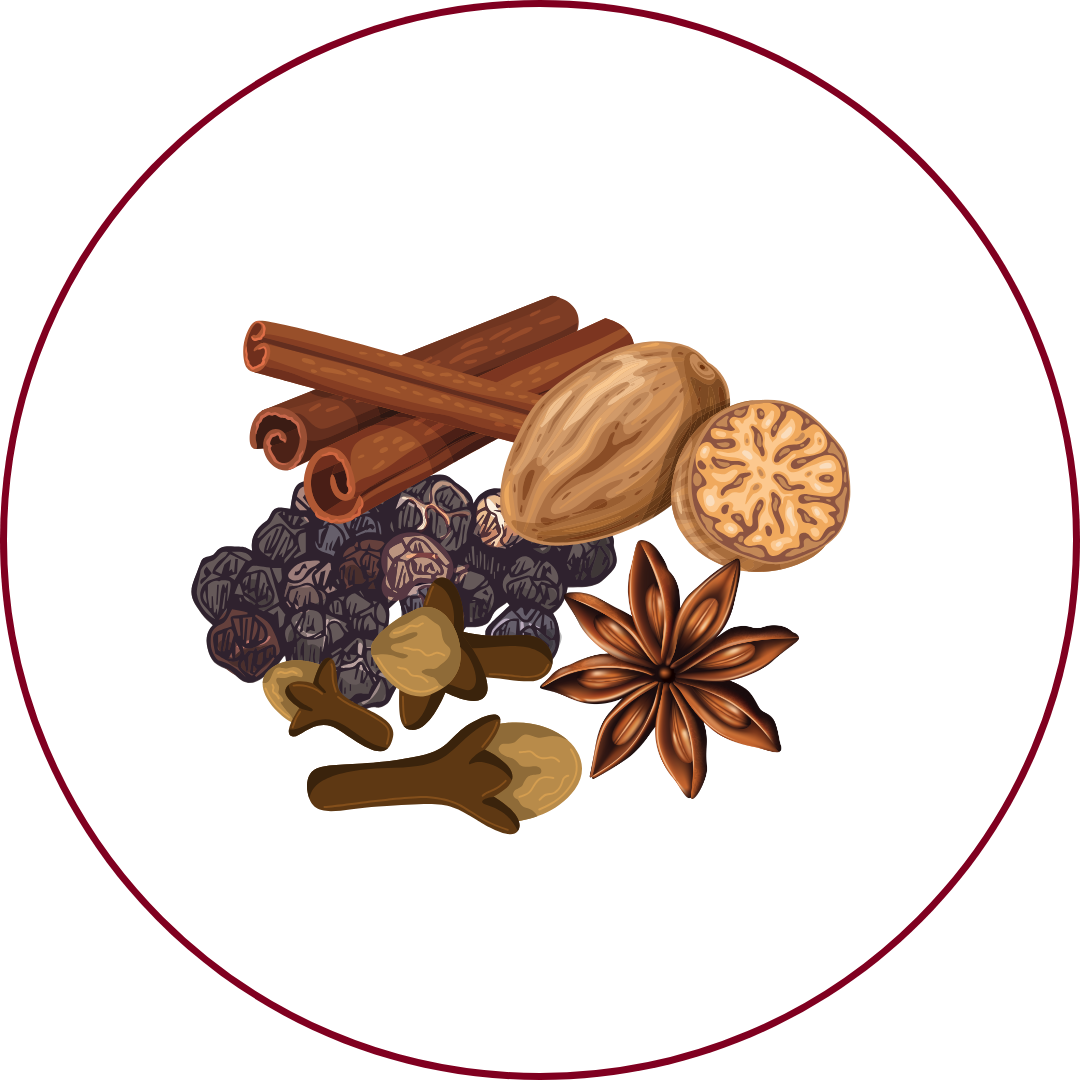Grape Variety
Gaglioppo
"gah-LYOH-poh"
Wine Styles
 Sparkling
Sparkling Light White
Light White Full White
Full White Aromatic
Aromatic Rosé
Rosé Light Red
Light Red Medium Red
Medium Red Full Red
Full Red Dessert
DessertAbout Gaglioppo
Origin
Calabria, Italy
History
Gaglioppo is a red wine grape variety indigenous to Calabria, in southern Italy. Historically, it was believed to have Greek origins, with its name thought to derive from the Greek 'Kalos Podos,' meaning 'beautiful foot,' possibly describing the shape of the grape bunch. However, recent DNA studies suggest that Gaglioppo is a descendant of the Sangiovese grape, indicating Italian lineage. It is the principal grape in the Cirò DOC and has been cultivated in the region for centuries, adapting well to Calabria's hot, dry climate.
Appearance
Medium-sized, thick-skinned berries with a deep blue-black hue, forming compact clusters.
Growing Traits
Gaglioppo thrives in the hot, dry conditions of Calabria, particularly in the mountainous regions of Cirò. The vines are drought-resistant but susceptible to diseases like oidium (powdery mildew) and peronospora (downy mildew), necessitating careful vineyard management. Gaglioppo responds best to dry conditions but can become too alcoholic if its high natural sugar levels are left to develop for too long on the vine.
Wine Characteristics
Body
4/5
Sweetness
1/5
Tannin
4/5
Acidity
3/5
Alcohol
4/5
Medium to full-bodied with a robust structure, offering firm tannins and a balanced profile. Typically dry, emphasizing its natural fruit flavors and earthy undertones. Moderate to high tannin levels, providing structure and aging potential. Medium acidity, contributing to its balance and food-pairing versatility. Moderate to high alcohol content, typically ranging between 13% and 14.5%, ensuring a robust and full-bodied wine.
Taste Profile

Red Fruits

Cherry

Spices

Earthy

Herbal
Gaglioppo wines are characterized by flavors of crushed berries and cherry, often accented by spicy and earthy notes. The moderate to high tannins provide a firm structure, while the medium acidity ensures balance, resulting in a wine that is both robust and refined.
Food Pairing
Gaglioppo's robust structure and earthy flavors make it an excellent match for hearty dishes such as roasted meats, game, and aged cheeses. It pairs well with traditional Calabrian cuisine, including spicy sausages and rich pasta dishes. The wine's firm tannins and moderate acidity also complement grilled vegetables and tomato-based sauces.
Growing Regions

Italy
Calabria (notably Cirò, Melissa, and Lamezia Terme)
Notable Wines & Producers
Cirò Rosso Classico Superiore DOC
Librandi
Fattoria San Francesco
Melissa Rosso DOC
Cantine Vincenzo Ippolito
Tenuta del Conte
Lamezia Rosso DOC
Statti
Cantine Lento
Gaglioppo FAQ
Common questions about this grape variety
What is the origin of Gaglioppo?
+
Calabria, Italy
Is Gaglioppo wine full bodied?
+
Gaglioppo has a body level of 4 out of 5. Which means that Gaglioppo is Moderate to Full bodied.
Is Gaglioppo wine dry or sweet?
+
Gaglioppo has a dryness level of 1 out of 5. Which means that Gaglioppo is Dry.
Where is Gaglioppo wine from?
+
Calabria, Italy
Where is Gaglioppo grown?
+
Gaglioppo is grown in Italy (Calabria (notably Cirò, Melissa, and Lamezia Terme)).
What is Gaglioppo like?
+
Gaglioppo wines are characterized by flavors of crushed berries and cherry, often accented by spicy and earthy notes. The moderate to high tannins provide a firm structure, while the medium acidity ensures balance, resulting in a wine that is both robust and refined.
What does Gaglioppo pair with?
+
Gaglioppo's robust structure and earthy flavors make it an excellent match for hearty dishes such as roasted meats, game, and aged cheeses. It pairs well with traditional Calabrian cuisine, including spicy sausages and rich pasta dishes. The wine's firm tannins and moderate acidity also complement grilled vegetables and tomato-based sauces.
What does Gaglioppo taste like?
+
Gaglioppo wines are characterized by flavors of crushed berries and cherry, often accented by spicy and earthy notes. The moderate to high tannins provide a firm structure, while the medium acidity ensures balance, resulting in a wine that is both robust and refined.
Take Gaglioppo Knowledge with You
Access detailed grape profiles, tasting notes, and pairing suggestions on your iPhone.
Download on theApp Store